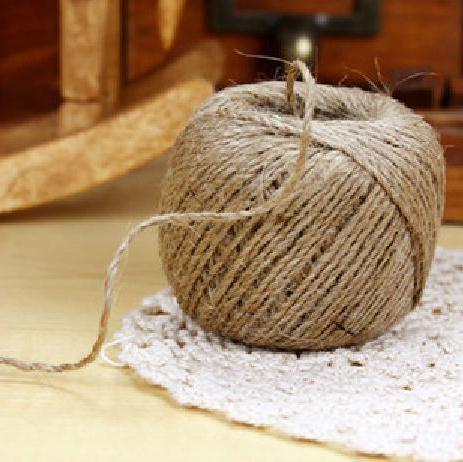Twine is a thin, durable thread or rope made of twisted bast, cotton or synthetic fibers. This product is necessary for packaging and linking goods, and also serves as an auxiliary material in various sectors of the economy. Features and properties of twine largely depend on the characteristics of the fibers of which it is made.
Raw materials for jute twine
Jute twine is made from long and soft natural strands that are obtained from plants of the same name. The main crop areas are located in the warm and humid subtropical regions of India, Bangladesh, as well as in Asia and other regions with suitable climatic conditions.
Jute fiber is the most affordable natural raw material for making yarn. But due to insufficient elasticity, the fabric from it turns out to be tough and rough. Nevertheless, a lot of goods are made from jute: furniture fabrics, burlap, packaging material, insulation, shoes. The main scope of application of the strands of this plant is the manufacture of twine, ropes, ropes. Such products have a silky-golden sheen characteristic of the feedstock, which is rightly called "golden fiber".

The production of fiber from jute takes the second place in the world market (after cotton). Such success is due to the high yield of this wonderful plant and the low cost of production. The main advantage of the raw materials from which jute twine is made is its naturalness. The strands of the plant consist mainly of cellulose and contain 12.7% lignin - a natural component responsible for the strength of the stems and reducing the permeability of the cell walls. A unique property of the "golden fiber" is its ability to biodegradation: when disposed of, it completely decomposes without polluting the environment.
Benefits of Jute Twine
Compared to similar products from other natural fibers, jute twine has higher strength, low tensile and softness, therefore it is easily tied into reliable knots. Also known are the advantages of the twine of the "golden fiber", as antistatic, resistance to ultraviolet radiation and temperature extremes, high hygroscopicity.
Fields of application
Jute twine is used in agriculture for gartering plants and for drying tobacco. This is an excellent tool for linking and packing any goods, mail, as well as for installing seals when sealing correspondence and cash bags, for flashing archive files. For these purposes, polished jute twine is most suitable, having increased strength and smoothness.
It is also used in the food industry. Since the natural origin and qualitative characteristics of the jute sword make it indispensable for dressing products when smoking sausages, fish and cheese. Ecological purity of this dressing is the key to product safety and preservation of its taste.
In the construction of residential buildings, it is used as a heater for caulking joints between the crowns of logs or beams.
Needlework
From jute twine, which has an aesthetic appearance and a beautiful golden brown color, create designer jewelry, artwork and original crafts.
This is an excellent material for needlework, plastic, well-retaining shape, resistant to deformation and durable. And, importantly, affordable. It can be used both as the main and auxiliary material for the implementation of any creative ideas. Macrame or filigree jute weaving is becoming an increasingly popular technique for interior decoration.
The wide and varied use of jute twine is due to its excellent performance and aesthetic appeal.